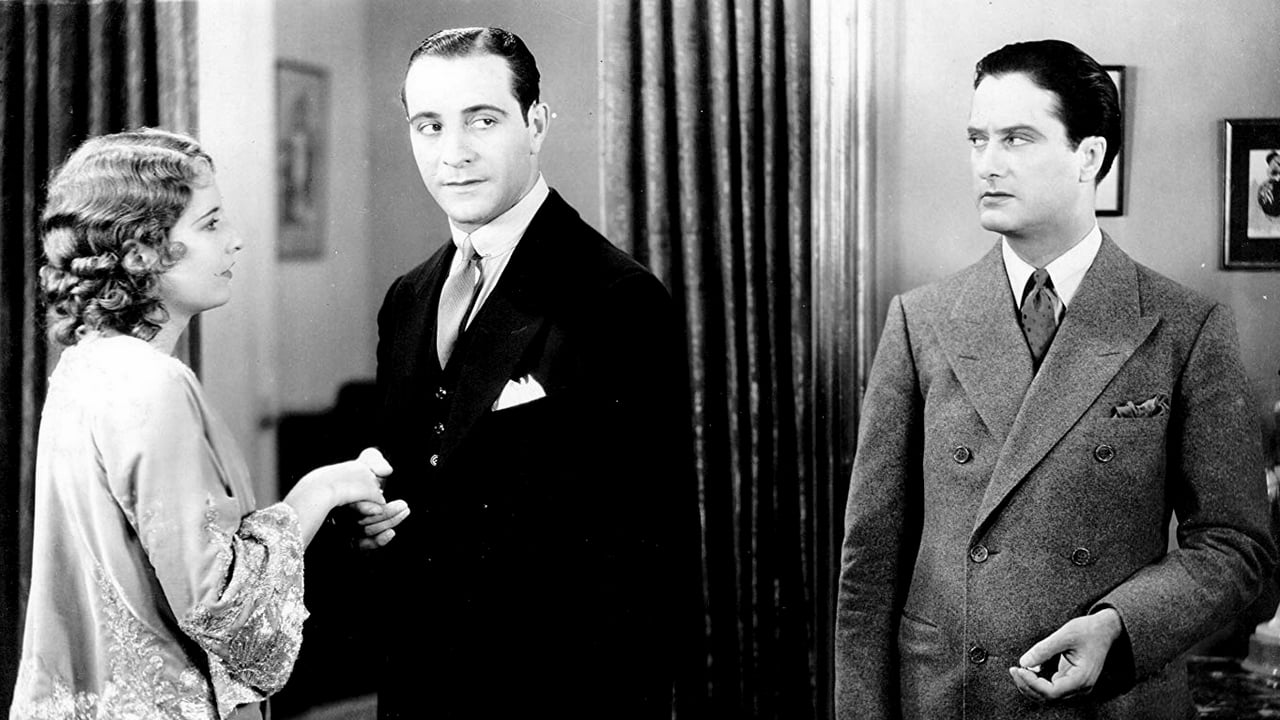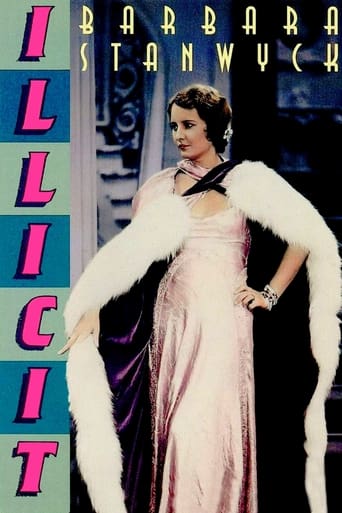

You won't be disappointed!
... View MoreFantastic!
... View MoreWorth seeing just to witness how winsome it is.
... View MoreThe film never slows down or bores, plunging from one harrowing sequence to the next.
... View MoreThis film starts off strong enough, with Barbara Stanwyck playing James Rennie's lover and some charming early scenes. In a bit of a twist, she's the one not interested in marriage, as she believes it will destroy their happiness. It's clearly a pre-Code (and modern!) premise, and the baby-faced Stanwyck is adorable as she exclaims 'And we're both a riot in our underwear!' while talking about things they have in common. There are also some cute moments provided by their friend, a toper (Charles Butterworth), and when Stanwyck and Rennie are talking on the phone together. The film is not quite as good as it could have been, though, as the plot is predictable (they get married, and sure enough, they both cheat), and the conflicting emotions are not reflected well enough in any of the cast's acting. You have to give it credit for the premise though, and it's worth watching for Stanwyck and Butterworth.
... View MoreBy 1931, Barbara Stanwyck was moving quickly to the forefront of Hollywood stardom, and critics (as well as the public) were taking notice. An association with Frank Capra at Columbia and a non-exclusive contract with Warner Brothers made the movie audiences of the pre-code depression era aware of her massive talents, particularly as a serious dramatic actress who could handle comedy as well. Her movies were often hit and miss, going between mediocre melodramas like "Ten Cents a Dance" and such classics as "The Miracle Woman", as well as fascinatingly fun exposes on sin with "Night Nurse" and later on "Ladies They Talk About" and "Baby Face". If anybody could sin on screen with a gleam in their eye, it was Barbara Stanwyck."Illicit" certainly doesn't lack on sinful glamour with its lavish Park Avenue settings, a pre-code forbidden plot involving single lovers (Stanwyck and James Rennie) obviously involved in a sexual relationship, droll comedy by Charles Butterworth (as a fun-loving lush who constantly "borrows" Rennie's stash of liquor), and perky Joan Blondell. Unfortunately, playing opposite the talented Stanwyck, James Rennie seems to be a total bore in the male lead, while there are definite sparks between Stanwyck and Ricardo Cortez, playing her old flame who just won't give her up and would be more willing than to adhere to her desire for a serious relationship without the benefit (or in her opinion, curse) of marriage. The imperious looking Natalie Moorehead is the other woman who comes between Stanwyck and Rennie, discovering boredom after their freedom comes to an end thanks to his pressure on her to tie the knot. While their characters are interesting, they are too one-note to add much more to the plot where you pretty much already know what is going to happen.Unfortunately, as excellent as Stanwyck is, her character really doesn't have any motivation for avoiding marriage other than memories of her own parent's ill-fated union. Claude Gillingwater offers brief wisdom as Rennie's understanding father who would like nothing more than to see Stanwyck become his daughter-in-law, but after his one scene, totally disappears from the film, taking away the only sensible character in the film. Two years later with more character development and ten less minutes, the same story was better served as "Ex-Lady" where the rising Bette Davis got a better leading man as well as a career for her character than Stanwyck, who obviously enjoyed being a party girl even when her marriage was on the rocks. Stanwyck does get a great exit though, but by that time, it's almost too little, too late.
... View MoreThe best part of this rather boring gabfest is getting to see ladies high-fashion outfits, circa 1930. Some of them are real doozies. Stanwyck gets more than her share of slinky finery as a rich guy's paramour. Actually, the movie's premise is a significant one—does marriage somehow kill love? Anne (Stanwyck) seems to think so and sometimes acts on the premise. The trouble is that the premise gets drowned out by all the talk from one scene to the next, without let-up. Then too, director Mayo adds nothing to what turns out to be a filmed stage play. To be charitable, his options may have been cramped by the newness of movie sound equipment.Pre-Code liberties are evident in the first few scenes where Anne, in a clinging negligee, and Dick (Rennie) discuss whether to marry or to continue living in sin. After that, the screenplay settles into more conventional marital mix-ups. But at least Stanwyck shines, showing why she was slated for bigger and better things. In fact, she's almost girlish, a really long way from the femme fatale of Double Indemnity (1944). Too bad she doesn't have more scenes with that other Warner's personality girl, Joan Blondell (Duckie). Anyway, I found the movie considerably less than I expected.
... View MoreThis movie creaks with age, but is memorable for being Barbara Stanwyck's first movie as a star. Miss Stanwyck gives an excellent performance, as always, but the supporting cast, particularly Charles Butterworth, steals the show as an amiable drunk whose bark is worse than his bite.
... View More